It can be confusing at times. There’re so many running shoe models out there, you’re not sure which one is right for you. Lunar this, Lunar that, and so on. It is indeed a problem of plenty, and here at solereview, we try to help you spend money on the right pair. Today we’re going to write a review of the 2014 Nike Lunareclipse 4, at which point you might want to ask: ‘What is the Lunareclipse?’
Simply put, it is the stabler, chunkier, plusher, cushiony-er version of the Lunarglide 5. With all the options and trims thrown in. Like the difference between the 2014 Ford Fusion SE and Titanium variant . Leather seats, rear view camera, heated seats,10-way power driver seats – all that feel good extras, you know. There you go, an apt description of the Lunareclipse 4. And what on earth is the Lunarglide? Oh dear. This is going to be a long day.
The Lunareclipse showed up in Spring 2011, close on heels of the original Lunarglide launch in Fall 2010. Both shoes heralded the start of a brand new product direction for Nike, and approached minimizing foot pronation (inward roll) in a different way from the shoes back then. The traditional way used a combination of a hard foam wedge on the inner side and a softer outer foam to help arrest foot roll. The Glide and Eclipse used midsoles which stacked two densities of beveled foam together at an angle; this allowed for a more gradual roll of foot instead of being abruptly stopped by the traditional foam wedge. This construction also widened the shoe’s appeal, extending it to mild-over pronators and neutral runners.
Lunarglide went on to become an unprecedented success story, certainly becoming one of the best selling running shoes ever to come from Nike. It helped that the shoe was just over $100, which has now become the pricing sweet spot when it comes to premium running shoes. The LunarEclipse continued to shadow the Lunarglide each year, but with none of the humongous commercial success of the latter. With good reason too. The Eclipse costs 25% more than the Glide, and it hasn’t been marketed by Nike as heavily as the Lunarglide. But retail sales notwithstanding, we are of the opinion that as a standalone shoe, the Lunareclipse 4 is an understated product which is really good, and has well defined slot in the Nike footwear ecosystem.
Remember the now discontinued Equalon 4? Pity Nike did away with that shoe, but somehow we feel that the LunarEclipse is its spiritual successor in a looser sense. Agreed, slightly more modern with a diluted focus but with the same basic premise, which is combining stability with cushioning. That said, it can’t truly replace the Equalon because that shoe felt like a few others at that time; incredibly cushioned which gave Vomero 3 like levels of materials and cushioning, the only difference being a hard midsole section thrown in under the arch area.
In recent years, Nike has completely moved away from offering hard core ‘stability’ shoes, in favour of ‘motion control’ and ’support’ shoes like the Lunarglide. Even the Zoom Structure isn’t what it used to be anymore, moving away from the traditional stability platform. Motion control, support and stability are often bandied around words which come across as synonyms, but they aren’t. Stability in our view, comes from a relatively unyielding sole unit which limits foot pronation. Motion control shoes on the other hand (Lunarglide being a good example) are ones which guide the foot to roll in a certain way, while not being necessarily stable underfoot. To cut a long story short, the LunarEclipse 4 is a motion control shoe, with major supportive upper elements weaved into the equation.
The Lunareclipse has always been a step behind the Lunarglide when it came to adopting the latest design direction. The 2013 LunarEclipse 3 behaved like a beefed up version of the 2011 Lunarglide 3. How? The LunarEclipse 3 did not feature the new stacked-together design of the 2012 Lunarglide 4; instead the sole drew inspiration from the older Lunarglide, which relied on a beveled Lunarlon foam insert embedded into the firmer midsole base. This year, the Lunarclipse finally moves to the new sole construction first seen in the 2012 Lunarglide 4. Is that a good thing or bad? Let’s run through the changes, starting bottom up.
The 2014 Eclipse’s rear foot landings come across as less padded and flatter. This is because the previously articulated under-heel crash pad has been done away with, so when you land rear-foot, the lack of crash pad results in a somewhat abrupt transition instead of gradually splaying the heel foam. The new shoe is touted as lighter by Nike, but those kind of claims are always followed by taking lots of rubber off the outsole. The 2014 Lunareclipse sees a massive reduction in outsole tread, and it affects the shoe in a few major ways. Durability takes an obvious hit, so forget about the hundreds of miles you might have got with the 2013 Lunareclipse 3. The new set-up is similar to the Flyknit Lunar 2, and the upcoming Lunarglide 6. Less rubber in the back, with the new ‘pressure mapped’ design in the forefoot.
The smoothness of the heel-to-toe transition also diminishes in the Eclipse 4, caused by the missing chunks of underfoot rubber. Contrast this to the near-unbroken periphery of outsole rubber shod on the Eclipse 3. This absence of rubber also translates into poorer traction on the 2014 model, with the earlier version feeling decidedly grippier. Forefoot cushioning behavior undergoes a change too, and also scales back on ground feedback. The 2013 Lunareclipse had smaller rubber lugs glued on underside the forefoot midsole foam, which Nike called the ‘bottomless foam carrier’. This led to a rich and well spread out forefoot cushioning, along with confidence inspiring ‘feel’ or feedback during take-offs. The Lunareclipse 4 moves to an arrangement which has these concentric rings underfoot, which kind of centres the cushioning sensation right under forefoot. And since there’s less exposed midsole foam in the forefoot, flexibility is scaled down, making the Lunareclipse 4 stiffer than last year Eclipse 3.
But fret not, Nike giveth with one hand and taketh with other. So while we’re slightly unhappy about the going-ons underfoot, the new upper design gives us plenty to cheer about. The mid-foot cinching is improved. The asymetrical lacing area carries over, but there are changes to the way how Flywire cords are configured. In the last year’s version, Flywire strings and the eyelet holes were separate components, with the cords stretching upwards, forming a loop which aligned with the eyelet holes. In the 2014 Lunareclipse, the medial eyelet section which rests on top of the foot integrates the Flywire with the main upper (like the Lunarglide 5), so the top down pressure is reduced, and also makes lacing more effective.
Rest of the upper is top-notch too. The forefoot does aways with overlays and integrates an internal (and invisible) toe bumper while using the engineered mesh which is open structured in some areas (ventilation), while closed in key areas for support. The sleeve like build of the upper fits well and eliminates any fear of tongue slide, and the padded tongue spacer mesh sits soft on the foot. The collar area continues to be a two-fabric construction, with changed materials. The Lunareclipse 3 featured a terry kind of mesh on the collar which felt like a pair of traditional sports socks wrapped around. The mesh used in the Eclipse 4 is smoother and more business-like.
The Lunareclipse 4’s mid-foot panels are re-engineered, and feature welded rubber panels which hooks up with the lacing system. The swooshes on both sides are massive pieces of night time visibility, with built-in reflectivity. In the back, the heel clip is huge, and cups the rear-foot in its entirety – even extending till the center of the arch. And finally the foot sits on the extremely supportive Fitsole 4 insole, which has plastic ribs under the arch area.
Go for a run in these, and the shoe smacks of massive upper support everywhere. The foot doesn’t budge at all, and this a lot to do with the extended plastic heel clip and Fitsole 4 insole. The heel clip has to be experienced to be believed – unlike regular heel counters, this structure wraps the sides and then curves under the foot. The outcome is a vice-like rearfoot and midfoot grip, which is also helped by the supportive collar with its high Achilles padding. The midfoot lacing system does the rest; the revised Flywire lacing grips the midfoot well alongside the very functional inner sleeve.
The Fitsole 4 sockliner is something. It’s an impressive cushy sandwich of two foam layers topped off with a soft fabric, and the rear half of the underside has a molded support structure. A solid Horse-shoe shaped clip goes underneath, and then arch area has these ribs which flex with the foot. If this isn’t awesome, what isn’t?
The cushioning is deep, but there’s no sensation of sink. It actually feels slightly less cushioned than the Lunarglide, despite the thicker foam base. And this is because the foot is resting on the supportive sockliner AND the heel clip, which deadens the cushioning sensation.
View this as a Lunareclipse 3 vs. Lunareclipse 4 comparison, some disappointments are bound to happen. Mostly gripes about lower outsole durability, stiffer forefoot and ‘could-be-better’ heel to toe transition. But look at the shoe in isolation, it scores well in a lot of areas, with superlative upper support, high level of materials and cushioning which delivers in the sweet spot between firm and soft.
If you ask us, the best way to look at the Lunareclipse 4 is to do so through a Lunarglide 5 lens. The Eclipse is a muscled up version of the Nike Lunarglide 5, so if you loved that shoe but wished for an extra serving of foot stability, cushioning, upper support and material trim levels, then look no further than the 2014 Lunareclipse 4. At $135 and 12 ounces (size 11), it is fair value too.
(Disclaimer: Solereview paid full US retail price for the shoe reviewed)


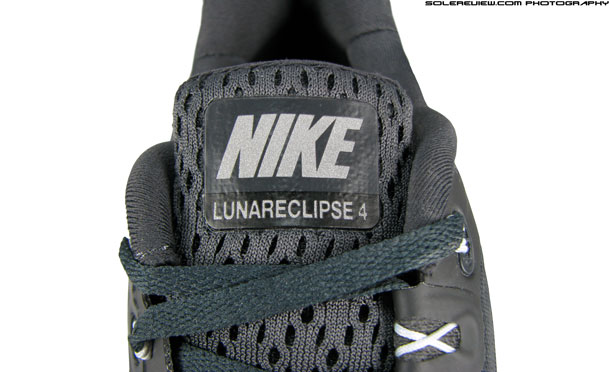
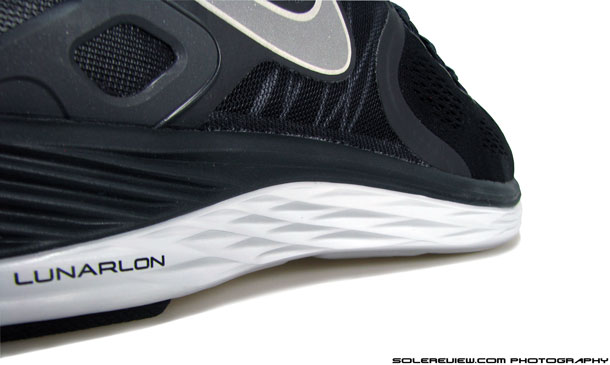
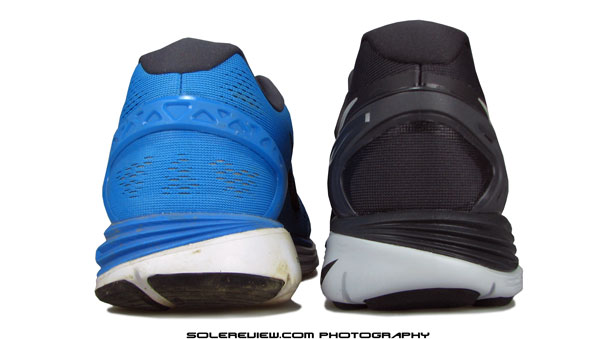

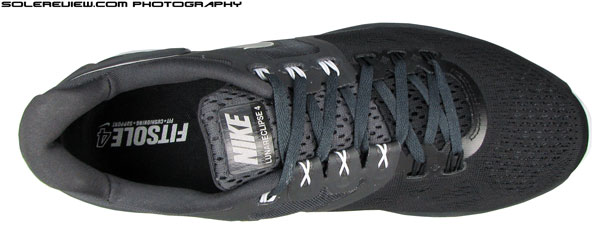
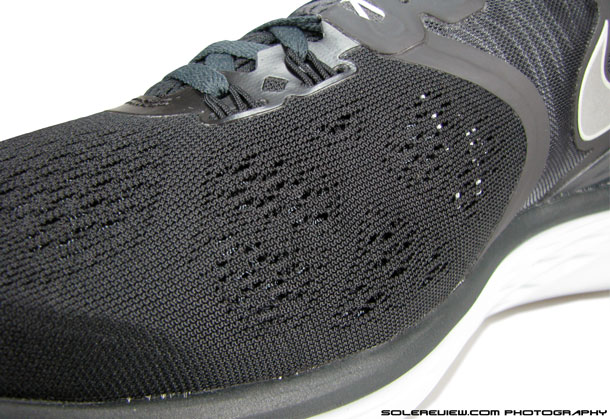
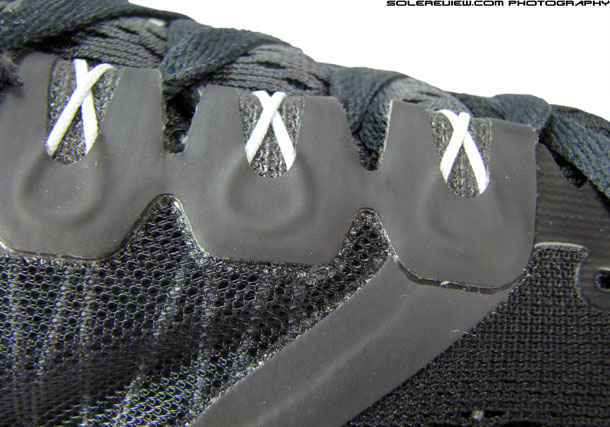


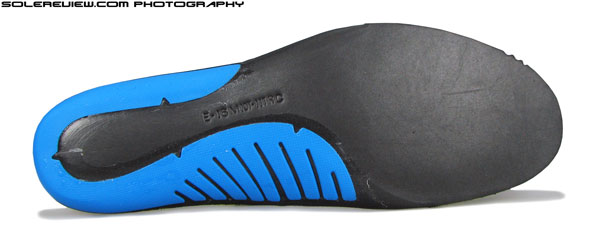


32 comments
Can this also be used as a workout shoe?
If workout means weight training, then yes, trail running shoes like the Wildhorse can be used.
Unless you’re doing stuff on a wooden floor which requires non-marking rubber.
Have you any experience with the Lunareclipse 3? I found one at a local shop. It didn’t look that much different than the 4 although it did have the older plain lugged outsole which honestly seemed more versatile than the new model.
I was very close to buying the shoe but I didn’t really like the feel of the rigid insole. In hindsight, that is probably something easily fixed.
Yes, tried the LE3 and concur that the outsole durability will potentially be lower on the LE4. Also have a sense that the LE5 will end up being closer to LunarEclipse 3.
I have both and the LE3 is better
The LE3 is stable and soft. The LE4 is stable but way less soft. It is like a totally different shoe, I actually regret buying the LE4 and will buy LE3s on eBay.
Thank you so much for a great review, as well as all the others. Reviews with such detail are a rarity on the internet, in my experience. They are most appreciated!
I’m a new runner and have just completed a 5k program (Nike Running) and am about to start another program to improve my pace to under 22 minutes. I’ve been running in Nike Free 5.0s and I just love the shoe and the freedom it gives. But unfortunately I tend to overpronate (moderately) and the minimal medial arch support just isn’t enough for me. It’s led to ITBS and probably PFPS. Rest and exercises do the trick, but I suspect I need to move to something with more support. Which led me to this review.
I’m looking at the LE4, Asics GT-2000-2, Asics Gel Kayano 21, Adidas Boost ESM 2.0 and the new Structure 18 (eagerly awaiting that review!) Other brands like Saucony, Brooks and UA aren’t available where I live. Skechers is, but that whole zero drop thing has me super confused!
Am I on the right track? Or is there something else I should be considering?
Thanks!!
-Rohit
Happy to hear you found reviews on this site helpful, and thank you for visiting us!
Out of the options you’ve listed, the GT-2000 2 and LE4 could be worth trying, along with the Nike Zoom Elite 7(firmest of the lot). The relatively firmer midsoles could potentially help with PF. The Structure 18 could also be a candidate, but we can’t say for sure till the review is up online later this month.
Don’t worry about the heel drop thing, it is over-rated in most cases. A shoe which suits your running style and prevents injuries is the shoe you should stick to, regardless of a 12mm or 3 mm heel drop.
Sub 22:00 5K is great pace, and in our experience, firmer shoes help maintain speeds.
Thanks, I’ll check them out! Gotta say I love the look of the new Structure though.
So a softer ride doesn’t help with PFPS? I would have thought otherwise.
Your calendar feature is great. I find myself referring to it constantly, checking the days off one by one! Thanks!
Though a PS is thought to have different causes, most of it not due to footwear, our theory is that a firmer shoe helps in better stability. Besides, ‘firmer’ shoes are still very cushioned.
The calendar helps people track our dates and pushes us too. If it wasn’t there, we’d be putting out only two reviews a month. This month was a total wipeout, though. Huge delays.
Yes, too bad about the injury. Wishing your wear tester/s a speedy (pun intended!) recovery!
See you around the site!
Thanks! And our Structure review should be up soon, definitely this month – if it’s one of the shoes you’ve been waiting for.
Yea it certainly is. BTW, I’m now going with a 10K program, not faster 5K. So I’m guessing a plusher ride is to be looked for?
As an aside, I recently dug up my old LunarElite+ from a few years ago. I used to love them till the tread peeled off. Now I just wear them to the shops. Whatever happened to that line?
The Structure 18 is an easy shoe to ‘read’, so review should be on time. For a 10k, something like the GT 2k or the Kayano 21 might just do it.
Did you have the 2009-10 Lunarelite with the Flywire? Those were nice shoes – there’s nothing like that currently. Only the Lunaracer 3 has a slight hint of similarity, but only just.
They were from 2011-12 I think. I certainly bought them in 2012. In any case something like that probably won’t do for me given the higher mileage and my definite need of some solid support.
I’ll have a look at the Kayano 21 as well but from your review perhaps the GT 2K2 should do just fine. It’s a price vs. value proposition. This running business is getting a tad expensive, you see!
Those are Lunarelites of 2010 vintage.
Yes, the GT 2000 2 should do it (and hopefully the upcoming GT 2K3 too). Running is expensive? Tell us about it! We all know it just too well.
Bah! I’m too lazy to bring the shoes back to change for a lunarglide6. My dad is not going to like going back downtown if he doesn’t have to. I hope this shoe works out for him… especially since he does the cement stairs/cement street light jogging. Maybe the slightly stiff bottom won’t be too bad… at least not compared to that brick of a shoe he used to wear from China (all the way from the 90s) Im just slightly bitter since I paid for it and this went for a bit more lol BAH HUMBUG!
The LE4 is a decent enough shoefor the needs you described yesterday, so these should work out for him.
This shoe is okay for under pronators right? The lady said my dad brings his feet out and then back in.
Yes, should work out well – at lower speeds, 20 minutes is really low intensity, so most running shoes $80 and above should do it.
Visitor Rating: 5 Stars
Hi there!
you have an excellent in depth blog out there for athletic shoes!
Coming to my query, using LunarEclipse+3 as my running shoe for a couple of years now. As an mild overpronator these shoes provided me with great support and cushioning during running.
But the LunarEclipse +3 are not easily available now. Do you think that LunarGlide 6 will provide a similar stability and cushioning as the Eclipse +3?
You did not favor the LunarEclipse+4 too much, that is why I am considering to switch from the LunarEclipse +3 to LunarGlide 6, instead of going on to Lunar Eclipse 4 or 5.
Thanks
Give the Lunareclipse 4 or 5 a quick fit trial at the store, who knows, you might like it despite the midsole design change. Just don’t discount it yet – else, you have the Lunarglide 6 to fall back on.
Thanks for a quick reply but I am in two minds again.
I have the option to buy Either the LunarEclipse 4/5 or LunarGlide 6. In store tests are usually not that reliable in my opinion.
Given the choice, in your opinion which one of the above mentioned shoes is closer to LunarEclipse+3? Considering Stability/ Arch Support & Cushioning?
It’s not a simple answer, so you would need to prioritize which features holds more value over another.
The Lunarglide 6’s stability is closer to the LE 3 and more than the LE4, while on cushioning and under-arch support the LE4 scores over the LG6.
Thanks again for the clarification!
what’s the different? more stability and under-arch support
Stability is overall support from heel to toe. Under-arch support is limited to that specific area.
hi ya guys,
do we know the difference between The Nike LunarEclipse 4 and the new LunarEclipse 5 ?
i.e cushioning,stability,feel…see there is a couple of flywires on the outside of shoe.
thanks guys
Same midsole/outsole, so expect identical ride quality. Some tweaks on the upper, nothing major.
could the lunareclipse 4 be a substitute for the Lunarglide 5 as can’t seem to get these anymore and the lunarglide 6 seem different from the 5 (if that is true) thanks guys
This sounds silly but I have a pair of these and the laces do not sit on the centre of the shoe? Is this correct or are these faulty? Thanks
These are correct. Some shoes (such as this) use an asymmetrical design.
Comments are closed.